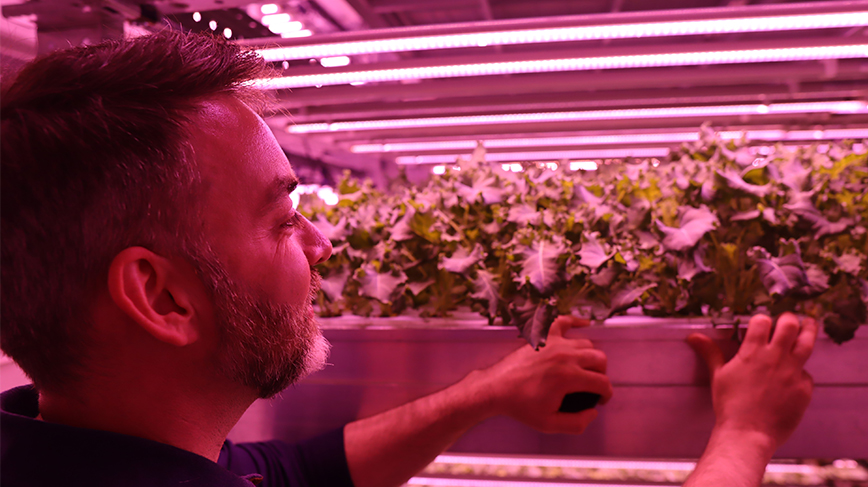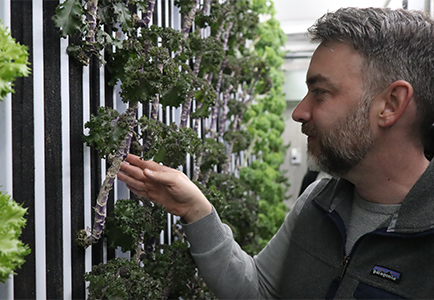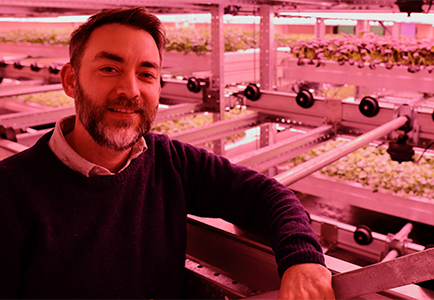Fresh vegetables all year round through farming in water

Water-based, or hydroponic, technology for indoor farming means that more and more retailers, restaurants and households are choosing to grow their own fresh vegetables.
“Developing indoor farming of food is necessary, not least bearing in mind climate change,” says Michael Martin, Professor of Sustainable Production at KTH and a researcher at IVL Swedish Environmental Research Institute.

Plants can be grown hydroponically, i.e. in water, in windowless spaces, without any sunlight at all. The crops obtain their energy from LED lighting instead of the sun, and from the water to which extra nutrients are added.
In addition, more plants can be grown in a smaller area as crops such as leafy vegetables and herbs can be grown vertically.
“Urban farming in unused indoor spaces, such as rock caverns and deserted multi-storey carparks, is attracting more and more interest in society. In our ongoing research projects, we work with farming companies, food retailers and restaurants, for example,” says Professor Michael Martin.
It was during the coronavirus pandemic that the public opened their eyes to indoor farming in earnest.
“Many people bought hydroponic growing kits so they could grow leafy vegetables and herbs in their kitchens. It’s positive that more people now know the basics of how the technology works, it increases the value of locally grown produce.”
Martin’s research is mainly aimed at the environmental impact of the growing systems.
“One benefit of locally grown produce is that we avoid environmentally damaging goods transport. Instead, our main challenge is making the growing process itself as energy efficient as possible,” he says.
Indoor farming is energy intensive, mainly due to the artificial lighting.
“Light can be adjusted in different ways to modify the plants in terms of colour, flavour and texture. Vegetables’ growing periods can be controlled through light.”

The LED lights above the plants not only provide the full spectrum of light, they also generate a lot of heat, which in turn increases the need for cooling and ventilation.
One of Martin’s ongoing research projects is exploring the possibility of using the surplus heat from the farms to heat nearby buildings.
“The thermal energy can be transferred to neighbouring businesses and buildings,” he says.
The research group is also looking more closely at how cities’ residual flows, such as sewerage systems, could be used in indoor farming in the future, for example to supply nutrients, water and planting materials.
In his opinion, Sweden is at the leading edge when it comes to developing hydroponic farming, and market demand is currently strongest for herbs, green leafy vegetables, cucumbers and tomatoes grown indoors.
Lettuce takes around 20 to 30 days to grow using hydroponic methods and cannot be stored for long. In spite of this, a lot of Sweden’s lettuce is currently imported from countries such as Spain and Italy.
“Lettuce grown indoors in Sweden could definitely be a more environmentally friendly option, despite the large amount of energy used in hydroponic farming. Firstly, there is no environmental impact from long-distance transport, and secondly, electricity in Sweden is comparatively more sustainable, so energy consumption has a relatively low environmental impact compared with other European countries,” says Martin.
“The research group is now aiming to further develop the types of food grown hydroponically. I hope that investments in commercial berry and small-fruit farming will increase in future. Above all, I hope to create even more efficient circular ecocycle systems for indoor farming.”
Katarina Ahlfort
Photo: Laura Carotti
